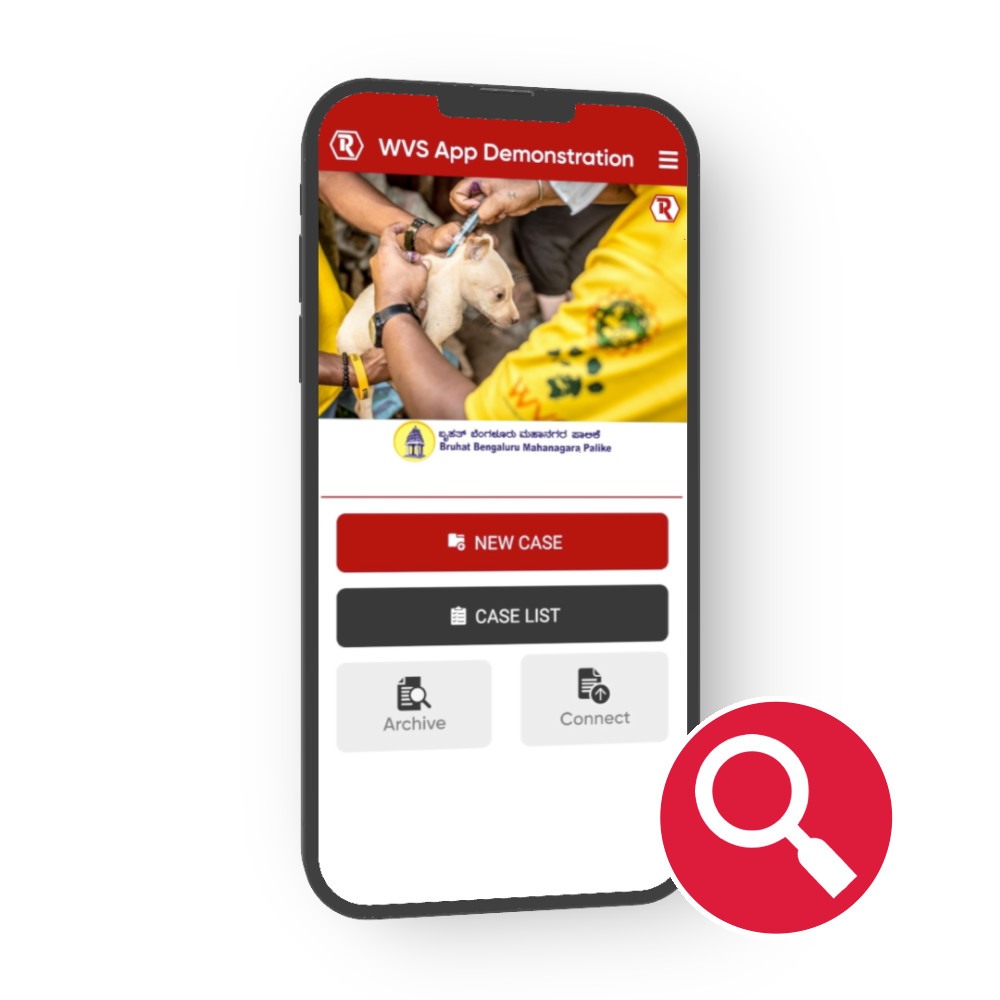REACT App
The Rabies Exposure Assessment and Contact Tracing (REACT) App has been developed from field experience around the world to support the implementation of effective rabies surveillance. With over 30,000 case records to date in 8 countries, the platform provides an easy-to-use guidance tool to staff working offline in challenging settings. All data captured are transmitted to a secure cloud server to enable rapid analysis and reporting of rabies data. The system is provided by the IRT to governments and NGO organisations working in rabies control, so get in touch if you are interested to try it out.
Log in to REACTComplete case management
The REACT App provides an all-in-one system for the management of rabies case investigations. Rabies officers are guided through each stage of investigation and reminded of actions that need to be completed. The app enables offline entry of data through easy-to-use forms available in multiple languages. The built-in structure is based on Integrated Bite Case Management (IBCM) protocols, making it possible for anyone to adopt this cost-effective and life-saving method. There are five stages to the rabies case investigation: Event notification; Rabies assessment; Quarantine; Laboratory results; and Reporting. We will introduce each of these below.
Event notification
The first stage in the investigation is the Event notification, when the Rabies Officer is notified of a possible rabid animal. This can be the report of someone bitten by a dog or an animal exhibiting signs of rabies. Within REACT a short form is completed, recording the details of the case, the location and condition of the animal and anyone bitten. A preliminary risk screening based on this information allows the Rabies Officer to determine the next steps in the investigation, deciding whether the case needs further investigation or whether verbal quarantine is an available option.


Rabies Assessment
The Rabies assessment stage involves a more detailed assessment of the case. This step typically takes place in the field, where the Rabies Officer can interview the bite victim personally and physically assess the suspect animal if available. By the end of the Rabies Assessment you should have a more complete picture of the situation, including the risk of rabies in the animal and identification of all people and animals that have been bitten. For animals posing a high risk of rabies, bite victims can be counselled to ensure they seek post-exposure treatment. For animals that are found dead and those that are euthanized due to signs of disease, samples should be sent to the laboratory for testing. If the animal appears healthy, then quarantine to observe the animal for a period of time might be an appropriate option.
Quarantine
In cases where the animal can be safely monitored, the next step is Quarantine. Using the REACT app, you are able to schedule quarantine check-ups to check the status of the animal during quarantine. Notifications are pushed to your phone to remind you of cases that you need to follow-up. At each quarantine check you are asked about the health status of the animal and you can indicate if it is healthy, was lost to follow-up, or has died. If the animal dies during quarantine or begins to show signs of rabies, efforts should be made to obtain a sample for laboratory testing.


Lab results
Timely laboratory rabies diagnosis is key to robust surveillance, and the app includes a section for recording and communicating laboratory test results. Obtaining samples for laboratory testing from dogs that have died or been euthanised is hugely beneficial. Laboratory testing provides crucial information on rabies transmission and enables post-exposure treatments to be prioritized towards individuals with high-risk exposures. After you receive rabies test results from the lab, update them in the app case record in the Lab Results section. In addition to helping you to keep track of case outcomes, it will also aid the managers of rabies control campaigns in planning dog vaccination activities.
Report
The final section in the app supports the final step in IBCM: Reporting. During this stage all relevant parties are notified of the outcome of your investigation. This includes the owner of the animal and bite victims, as well as animal and human health officials. At this stage you will need to confirm and document that everyone has been notified before you are able to close the case in the app.
All information collected during the investigation is uploaded to a central rabies database accessible by the program coordinator. This allows for near real-time surveillance of rabies in the area.

Sign up for our newsletter
We use cookies
We use cookies to ensure that we give you the best experience on our website. Would you like to accept all cookies for this site?
International Rabies Taskforce
c/o Mission Rabies USA
Sunnyvale
CA 94086